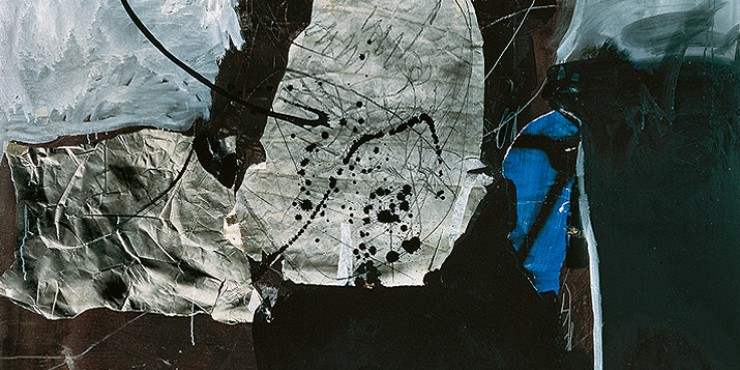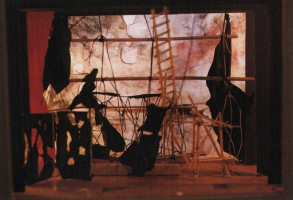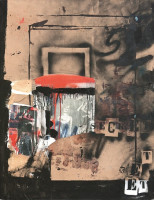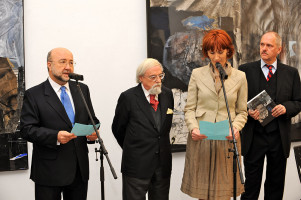
Antoni Clavé (1913 – 2005) is one of the most distinctive figures of the Catalan avant-garde initiated by Pablo Picasso, Joan Miró, Salvador Dalí and Antoni Tàpies. The retrospective of his work presented the most important periods of his development, the time when the artist’s conception was formed, drawing on different styles of the avant-garde. This successful draughtsman, printmaker and stage and costume designer soon became a painter, a collage and assemblage artist concerned with experimentation. His experience as a printmaker profoundly influenced his later painting. He experimented with new materials, particularly ropes, printed fabrics, corrugated cardboard, newspapers, integrating them into collage. Later on he made assemblages of diverse objects. Using a variety of materials, he perceived their form and natural properties and explored their texture.
In 1939 Clavé made an important decision. He emigrated to France and settled in Paris. The new environment provided him with creative inspiration and from the mid-1950s he largely devoted himself to painting. At the same time he returned to collage, which profoundly influenced his painting. Inspired by the expressive abstract style of the “Modern School of Paris”, he focused on integrating various materials into his paintings. He developed a feeling for combining diverse materials, their properties, textures and natural qualities. The thorough knowledge of materials enabled him to explore the contrast between their textures and visual effects, and evolve his lyrical style. He made collages from different scraps of paper, hessian and pieces of tapestry. Exploring diverse materials, Clavé developed his distinctive style. In the 1960s he began combining pieces of tapestry with painting, expanding the boundaries of collage towards assemblage. Perceptive to new inspiration, Clavé integrated graffiti, elements of trompe l'oeil, metal dies and frottage into his painting in a collage-like manner and even made collages of his own prints. Colour played an important role in his work and he created collage-like paintings. Exploiting different media, he achieved enigmatic, almost magical effects that show a close affinity with the Spanish surrealist tradition of interwar art.
The Spanish pavilion at the 1984 Venice Biennale was dedicated to Antoni Clavé in recognition of his lifelong achievements. This confirmed the importance of his position in post-war Spanish art. At the same time his work features prominently in post-war French painting.













